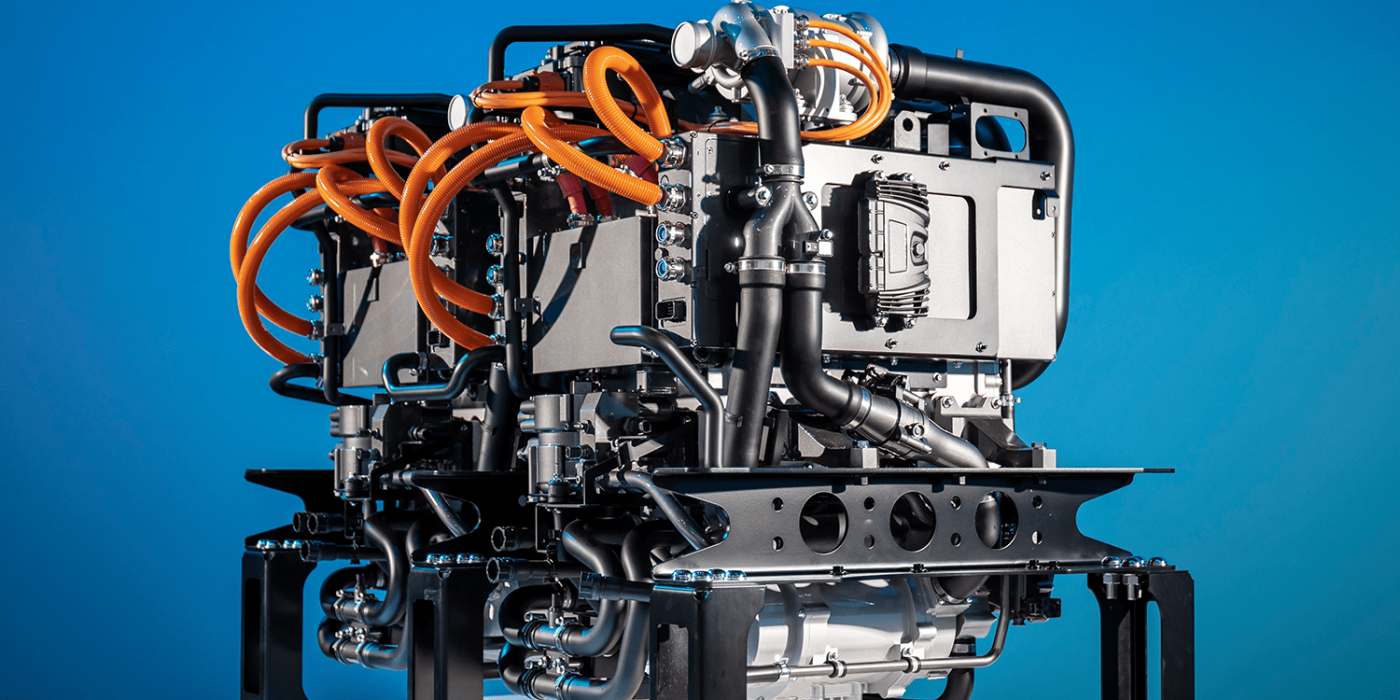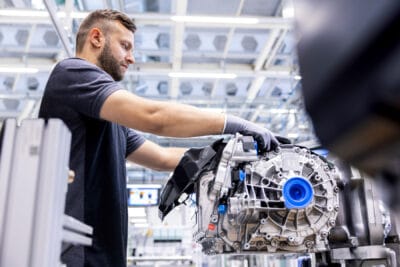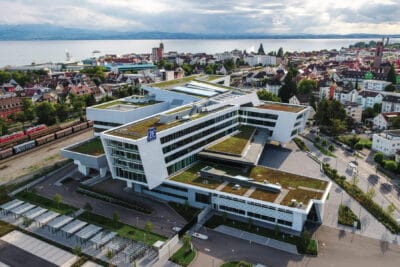Cellcentric aims to mass produce fuel cells by 2025
Daimler Truck and the Volvo Group have presented the fuel cell joint venture strategy, Cellcentric, founded on 1 March 2021. For this purpose, the company plans to establish one of the largest series production of fuel cell systems in Europe.
++ This article has been updated. Kindly continue reading below. ++
The core of the strategy is to build Cellcentric into one of the world’s leading manufacturers of fuel cell systems. Large-scale production is scheduled to start in 2025. Martin Lundstedt, CEO of the Volvo Group, spoke of a “gigafactory for fuel cells on the continent” at the online strategy presentation broadcast. The decision concerning the location of the plant is to be made by 2022.
On the way to large-scale production, pre-series production is being prepared in Esslingen, Germany. At present, the fuel cell systems are still in the prototype stage, but Daimler says production will also be ramped up here. In about three years, customer trials of fuel cell trucks will begin with pre-series systems. Then, in the second half of the decade, after the start of fuel cell production planned for 2025, it should be possible to put fuel cell trucks into series production.
Within the framework of Cellcentric, the fuel cells will be developed, but no joint vehicle development or even production will occur. “We want to let the customer decide which trucks are better – Mercedes and Freightliner or Volvo and Renault,” says Daimler Truck CEO Martin Daum. “We are only working together on the heart of the powertrain.” Then, with a smile, he added: “The question of which trucks are better is one of the few points on which I disagree with Martin Lundstedt.”
Earlier, Daum had stressed that Daimler and Volvo Group would share the same core assumptions on powertrain technology. “That’s why things quickly became concrete when Martin Lundstedt and I first exchanged visions about a year and a half ago,” Daum said.
Daimler and Volvo will focus on battery and fuel cell simultaneously
Unlike the VW commercial vehicle subsidiary Traton, which also wants to rely on batteries for long-distance trucks, Daimler and Volvo see the parallel development of battery and fuel cell in the commercial vehicle sector. Battery-electric vehicles on the short-haul, fuel cells for the long-haul. “Which drive is suitable depends on the application,” says Lundstedt. “Of course, there are areas where the technologies overlap. But the direction is clear.”
Daimler Truck CEO Daum went on to explain that trucks are often used flexibly. “You can’t always plan,” says Daum, obviously alluding to the charging processes. For this, he sees too much uncertainty in the future electricity grid. “If we are to run everything on green electricity – our houses, factories, cars and trucks – it will lead to a heavy load on the grids. So to relieve the strain on the power grids, we need a second source of energy for our drives.”
With the joint development and production of fuel cells, Daimler and Volvo want to tackle one of the main issues: costs. According to Daum, it should also be possible to equip city buses with fuel cells in the future, whose electrified versions today rely overwhelmingly on batteries.
There remains the issue of infrastructure: both Cellcentric shareholders call for a uniform regulatory framework in the EU to speed up the introduction of hydrogen-based fuel cells. Specifically, 300 “high-performance hydrogen filling stations” for heavy-duty vehicles are to be built by 2025, and a total of 1,000 filling stations by 2030.
With these 1,000 filling stations, which are subsidised by the government, Daum wants to solve the chicken-and-egg problem for hydrogen trucks. Or as Lundstedt puts it: “We need the vehicles, the infrastructure and the cost parity. It’s a simple multiplication: if one factor is zero, the result is also zero.”
Gas or liquid hydrogen?
However, at the filling stations, one question remains: is the hydrogen stored in liquid form (i.e. at -253 degrees Celsius) or gaseous form at high pressure? “The fuel cell can process both liquid and gaseous hydrogen, there is no difference,” says Daum. “Filling stations will only be able to support one technology – gaseous or liquid. So the industry has to make a choice.”
While Lundstedt does not comment on this point at the online conference, Daimler Truck CEO Daum has a clear preference: “My opinion on this is that we are better positioned socially with liquid hydrogen.” He points to the transport routes, which are easier with hydrogen production in distant countries than with gaseous hydrogen. Since Daum – despite the prototype GenH2 truck relying on liquid hydrogen – attributes the decision to “the industry”, it seems possible that Daimler will switch back to gaseous storage after all if there is no majority in the industry.
As part of the regulatory framework, the two groups favour “incentives for CO2-neutral technologies as well as a taxation system based on CO2 and energy content; an emissions trading system could be another option”, according to the statement.
CEO found at Mercedes plant
Dr Matthias Jurytko, currently Plant Manager and Head of Production at the Mercedes-Benz plant in Wörth, will move to Cellcentric starting on 1 June 2021 to take over the Managing Director and CEO role. The choice for Jurytko apparently fell due to his success as a manager during the Covid pandemic. At least as much is hinted by Martin Daum:
“With his many years of management experience, he possesses important skills for this task: extensive expertise in the truck business, coupled with experience in the management and further development of our plants. Matthias Jurytko has led the Wörth site safely through the Covid-19 pandemic in recent months as a competent manager and esteemed personality. Furthermore, under his leadership, the truck plant became a pioneer in implementing Daimler’s testing and vaccination strategy.”
Update 20 June 2021: Cellcentric opted for Bosch to supply electric air compressors with integrated power electronics for use in fuel-cell systems for heavy trucks and other on- and off-highway applications. This involves a long-term supply agreement for said components that regulate the oxygen supply in the fuel cell system.
“Bosch is devoting a huge effort to developing this component. For example, we have 15 cross-divisional teams working to commercialize the electric air compressor,” says Dr Uwe Gackstatter, president of the Bosch Powertrain Solutions division. The challenge will be to scale up to large scale production as required by Volvo and Daimler from customised manufacturing.
Bosch offers the air compressor in two power classes, 20 and 30 kilowatts, rated for voltages from 450 to 850 volts and 250–450 volts or 450–850 volts.
With reporting by Sebastian Schaal, Germany.
Source: webcast of the event, daimler.com, daimler.com (CEO), bosch-presse.de (update June ’21)





0 Comments